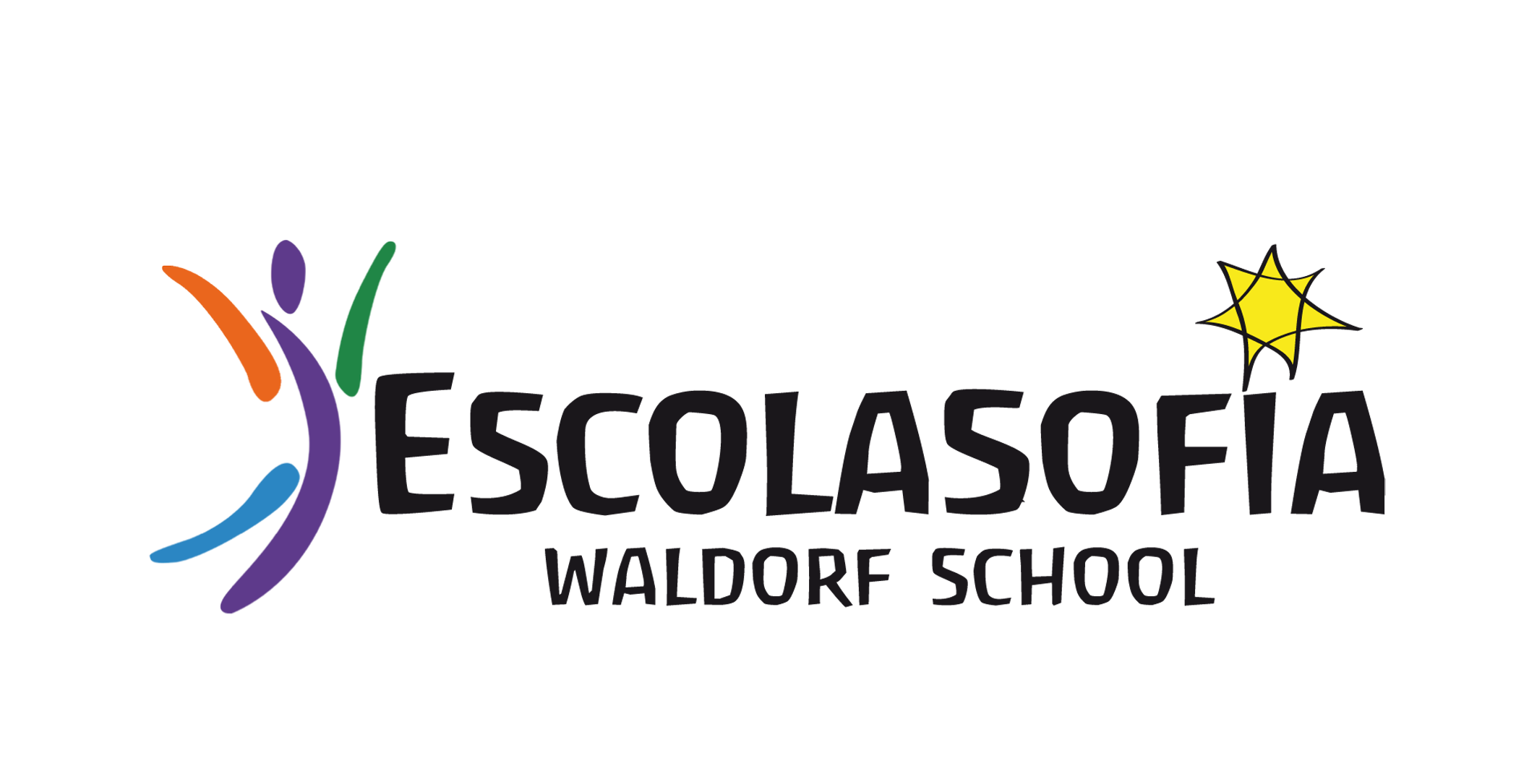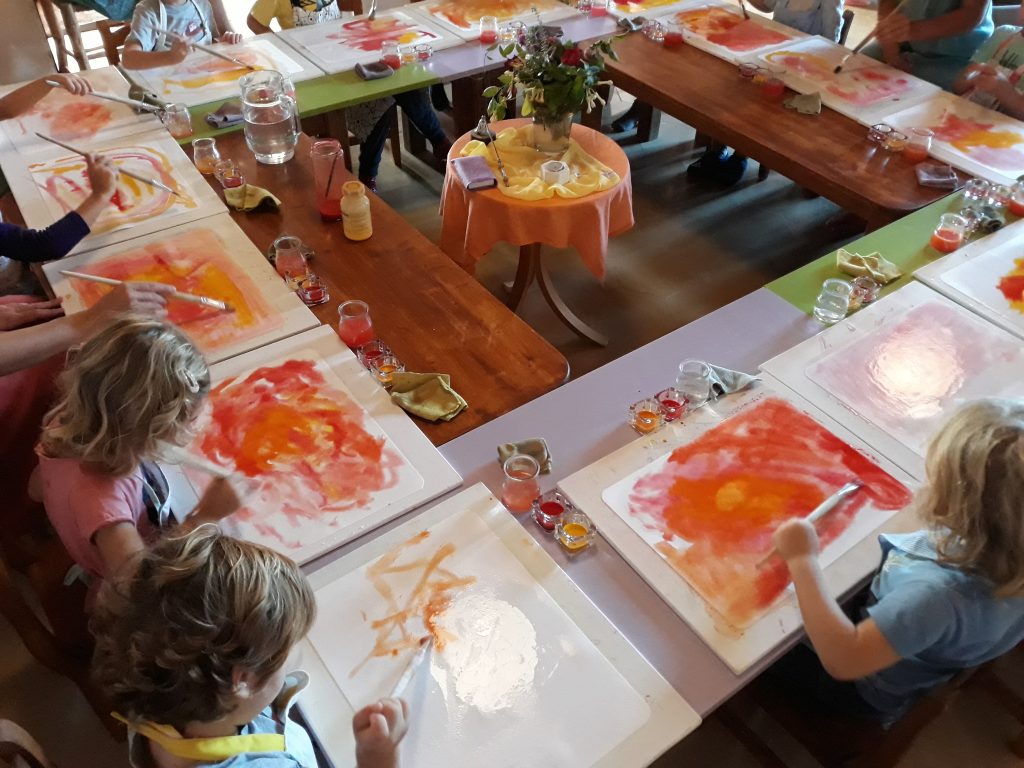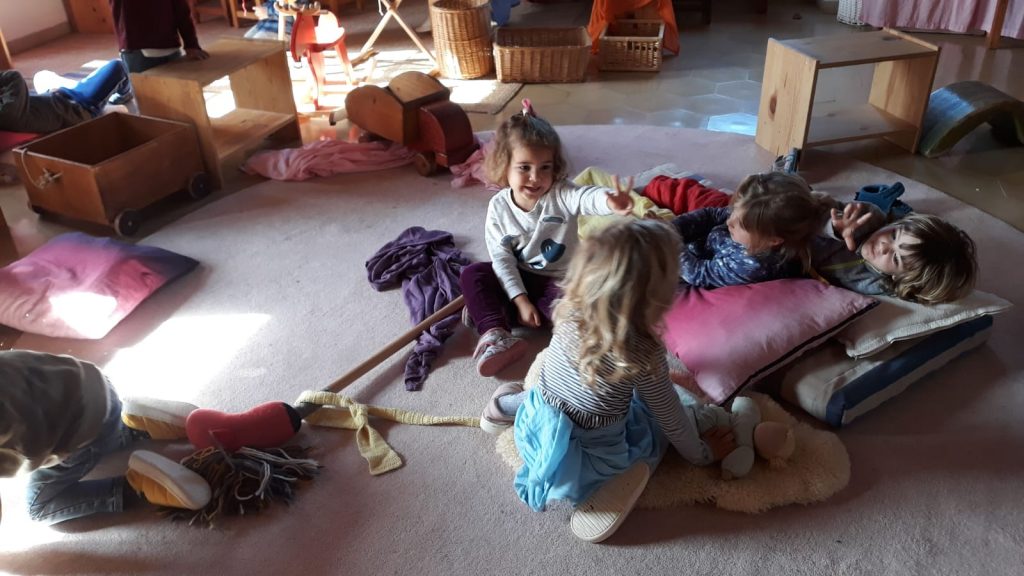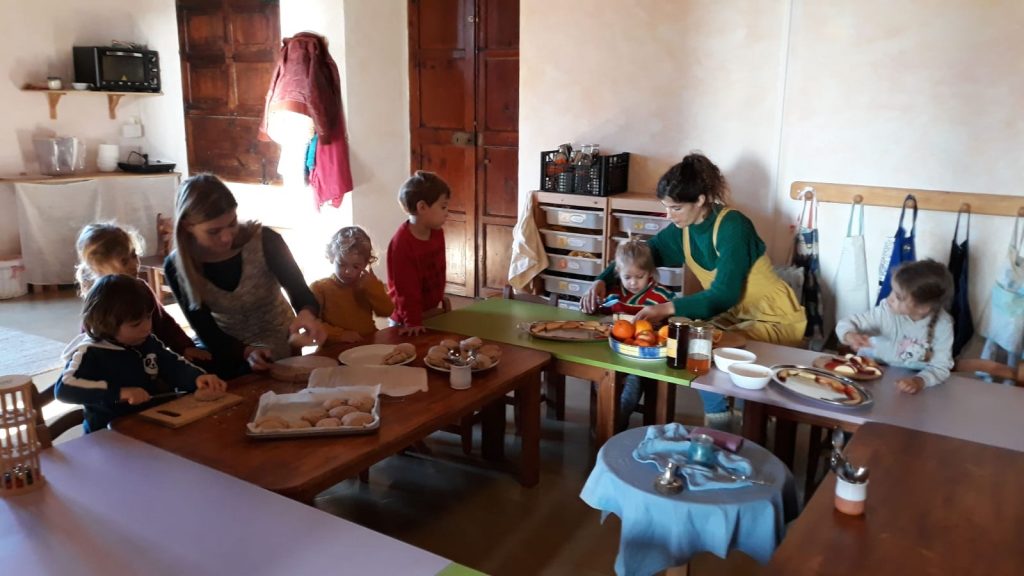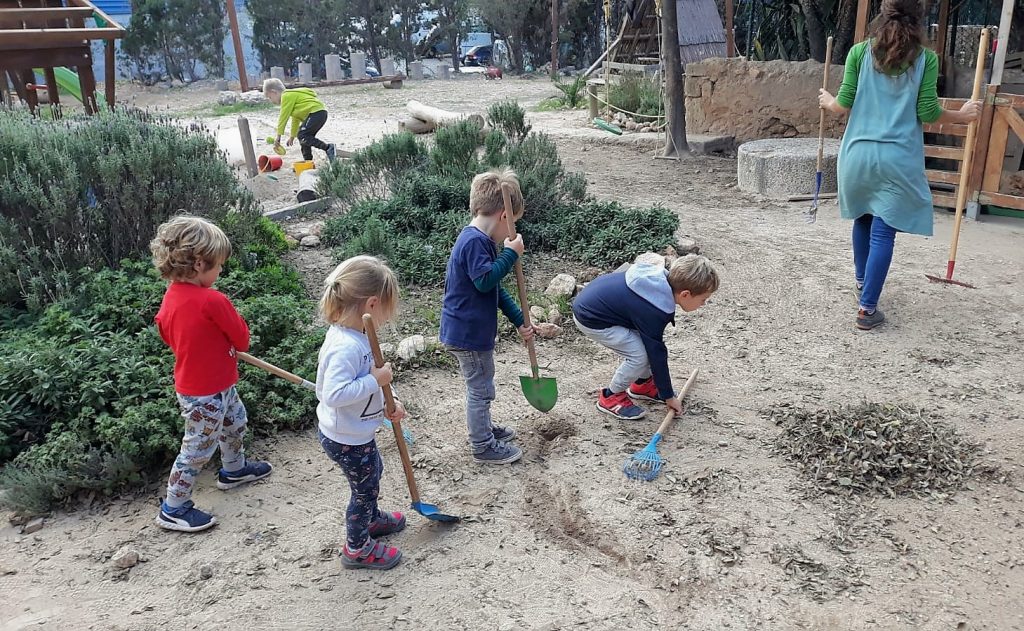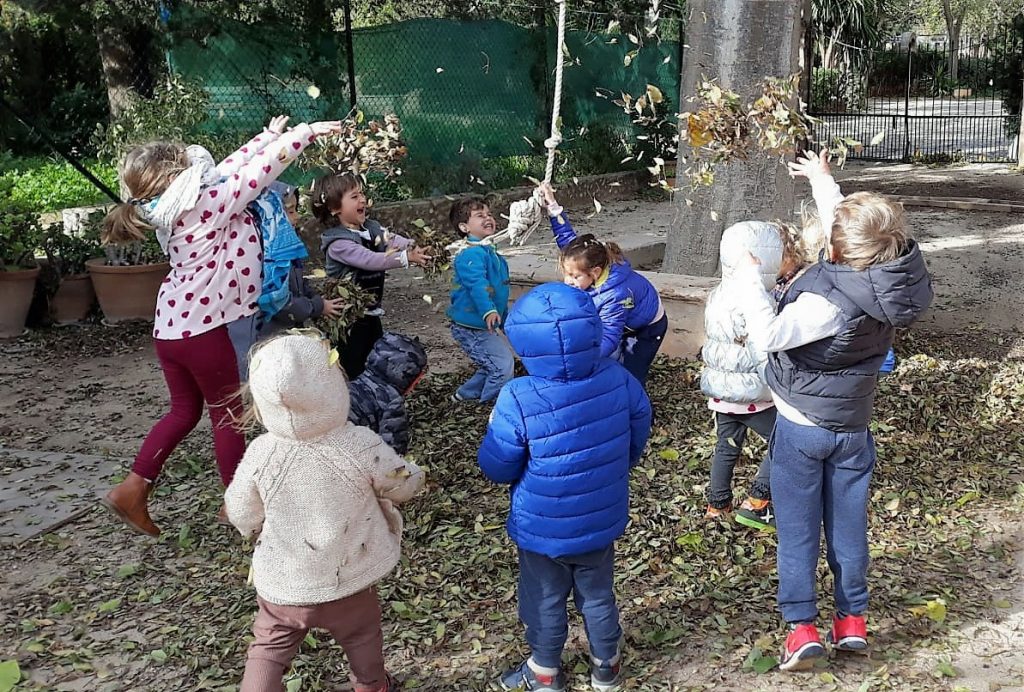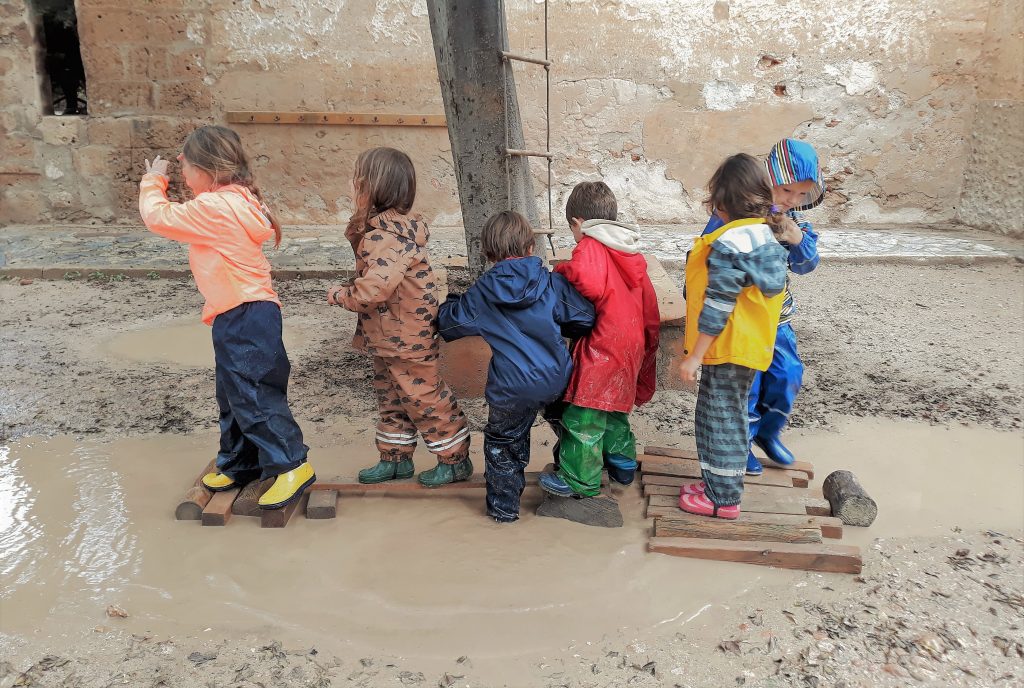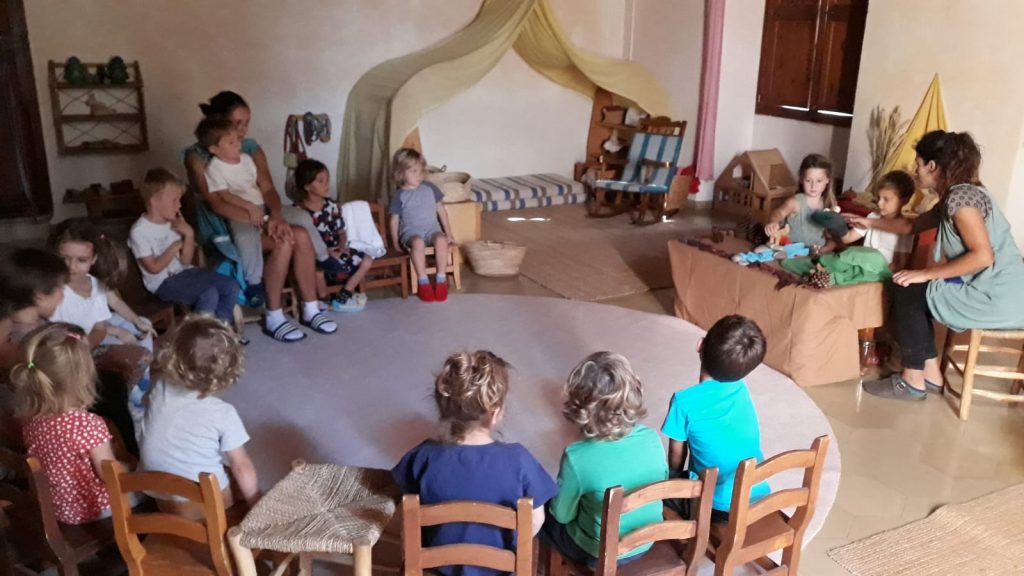Each morning, the teachers arrive very soon to Escolasofia to wake up the dolls, open the windows and prepare everything to welcome the children who start arriving at school one by one. They hang their coat on the coat rack with their name and put on their slippers before entering the classroom. Inside, their teachers are preparing the snack, mending a toy or knitting a blanket for the doll while singing a beautiful melody. They greet each child affectionately and the children play freely or ask to help the teachers with their chores. Every day, we carry out an artistic activity to help the children emotionally and strengthen their will: they make bread to be eaten the next day, they paint with watercolors, they model with beeswax, they drawn with wax blocks or they perform arts and crafts with wool, thread, felt, etc. depending on the season. The repetitive activities help the children to follow an inner rhythm that strengthens their self-confidence. Each activity is accompanied by songs with images of the season that the children joyfully imitate and repeat.
By midmorning, it’s time to pick up. The teachers sing a song and they begin pickup, naming the woodcutter in charge of collecting the trunks in their basket, the squirrel who will do the same with the pineapples, the shepherd who will accompany the animals to the stable, the cook who will clean the kitchen or the mom or dad who will take the dolls to sleep in their beds. When everything is in place, they meet in a circle to sing songs and dance, to recite a rhyme or poem and play games, all of them related to the current season. This way, the children experience the season within themselves. In the circle, we look at each other in the eyes, we work on rhythm, direction, memory, diction, observation …
Then they clean their hands and sit down at a well-prepared table with everything necessary for the snack. We always have fruit accompanied by a cereal that changes depending on the day of the week. We start eating together after thanking each other with a verse and wishing each other well. At the end of the meal, we all clear the table and prepare to go outside to play, even if it rains. We put on our rain suits and we have the greatest time!
On the playground, they have free play outside where they can run, jump, climb trees, swing, slide, balance walking over trunks, dig up dinosaur bones, find shelter in wooden houses or cook delicacies in the sandboxes. There is always someone who wants to help the teachers. There is so much to do: water plants, remove weeds, prune, sow, sweep, pick up dry leaves from trees in the fall, loosen sand, etc.
Towards the end of the morning, we pick up our things from the playground and go back to the classroom for story time with a simple story that follows the seasons of the year. Little by little the story is enriched with gestures, with small helpers who already know the dialogues and ends up being dramatized by the same children who represent the characters. Occasionally, and for special celebrations, the story is told with the help of a small table theater. A very special, magical moment is created in which the children immerse themselves in the images of the story that will nourish them emotionally. When we finish, we say goodbye with a short song until tomorrow.
Waldorf pedagogy uses rhythm to create harmonious breathing that brings health to the forming bodies of the little ones. In other words, free play in the classroom is a moment of expansion, followed by a moment of contraction with the circle and snack, in the playground, there is another moment of expansion and we finish the morning with the recollection of the story.
It is very important in these years to teach the children about kindness. We want the world around them to be good so that they feel safe and confident and that the values shown to them will accompany them in their adult life.
